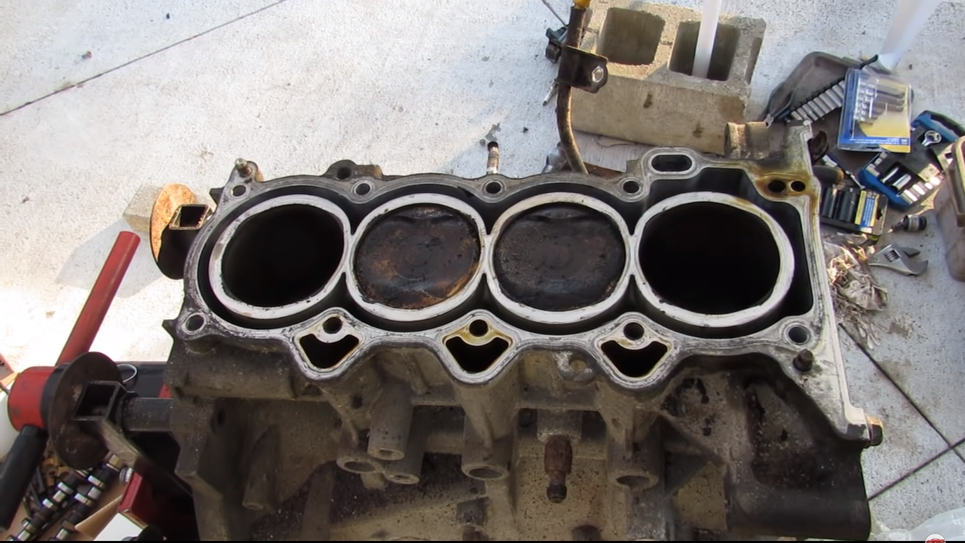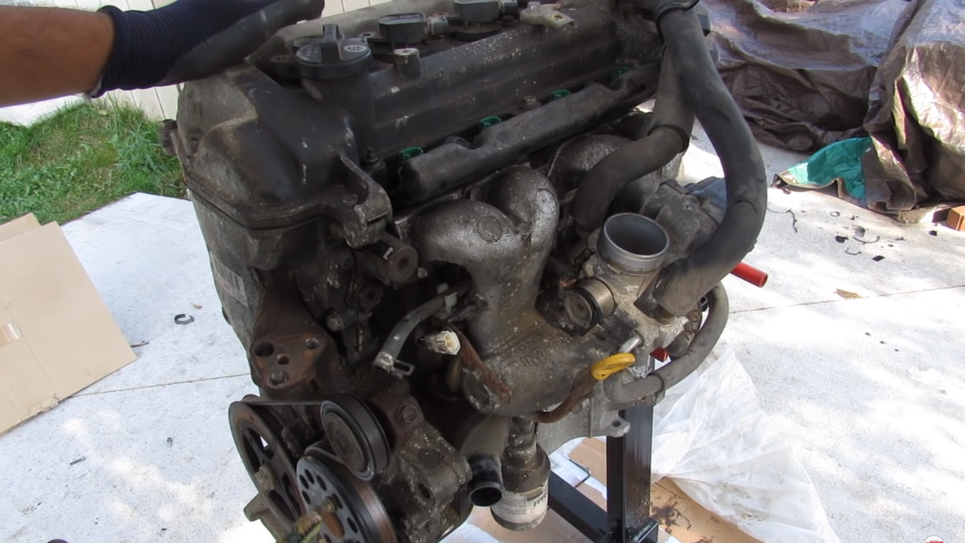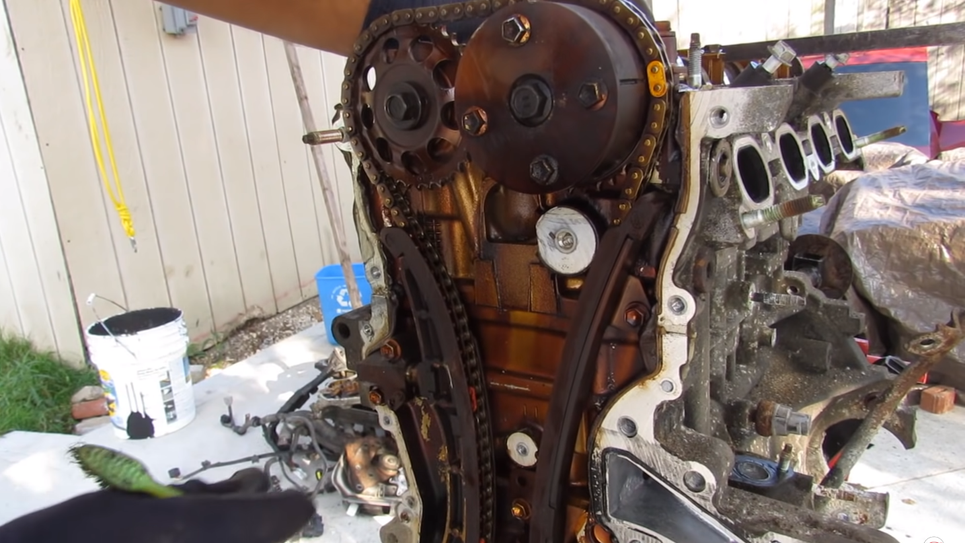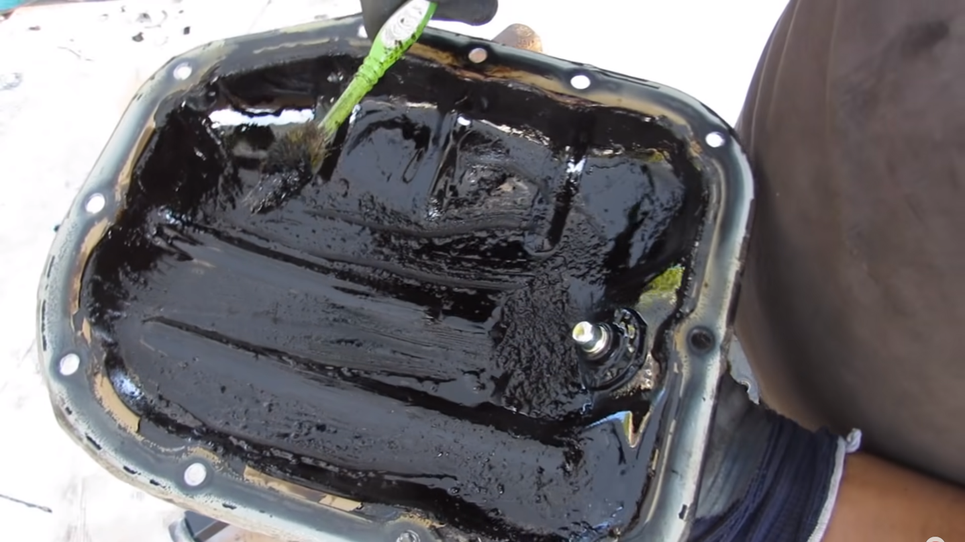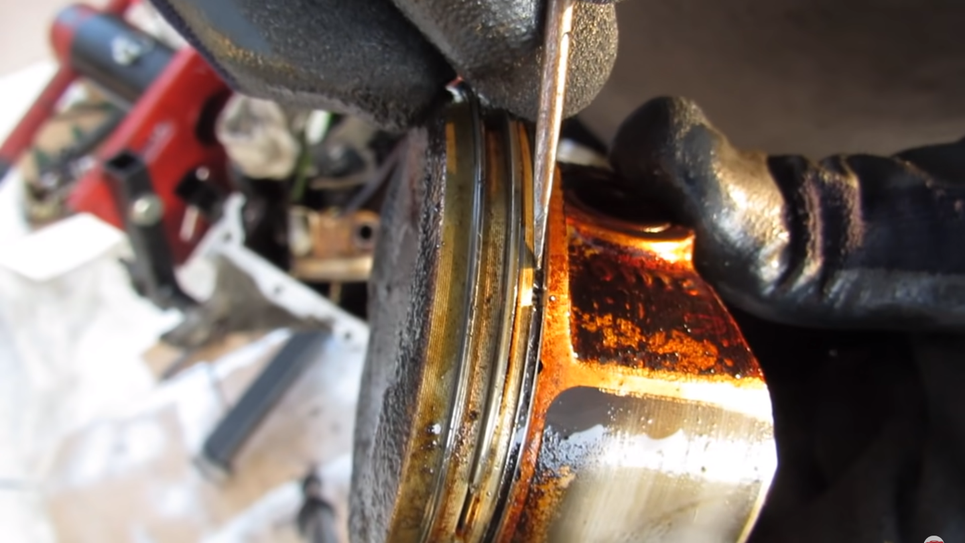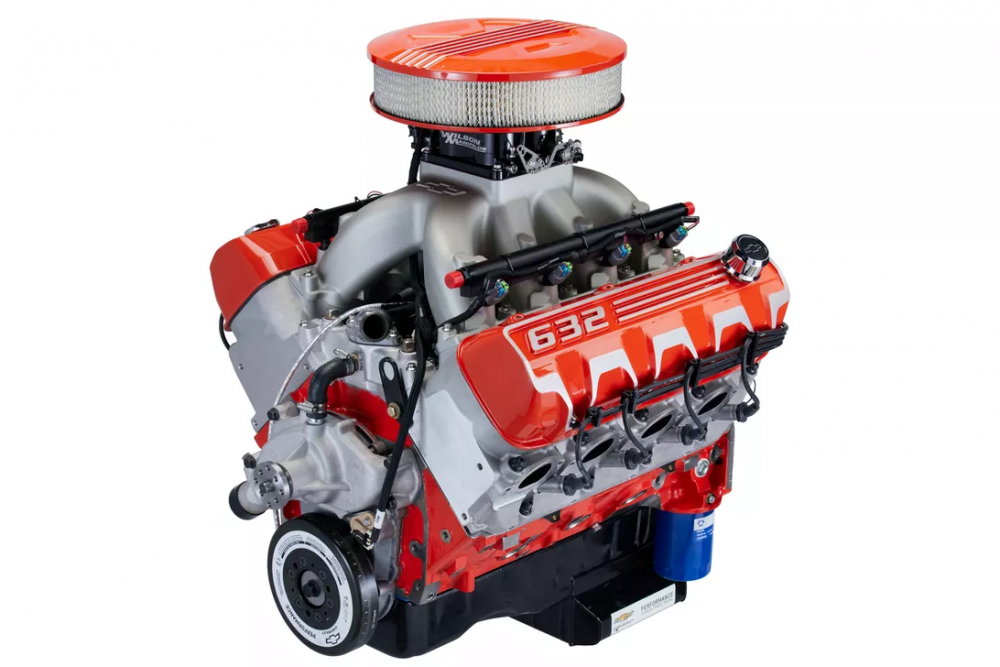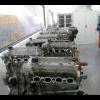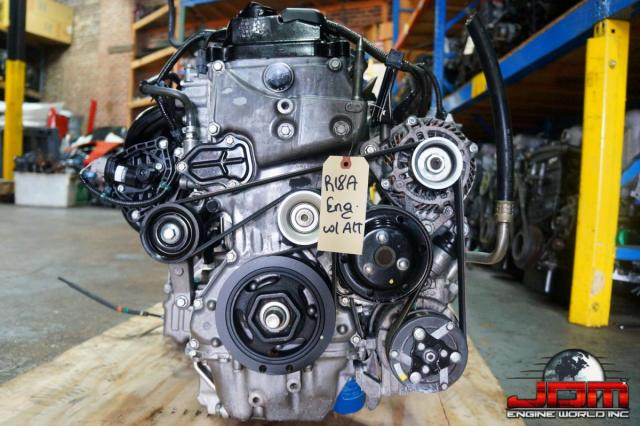Search the Community
Showing results for tags 'engine'.
-
During my last oil change at my regular workshop, I noticed the labour prices have increased 50% from before. So I am thinking of embarking on my own oil changes. With the investment into the proper equipment required, I should be able to cover the costs in 2 or 3 oil changes. There is only one problem, I don't know where to dispose of the old engine oil. If there are any of you who are currently doing your own oil changes, where do you dispose of the old oil?
-
https://jalopnik.com/check-out-what-a-toyota-prius-engine-looks-like-after-3-1848018980 <Check Out What A Toyota Prius Engine Looks Like After 303,000 Miles This Prius engine was neglected, but it was still alive and kicking. Screenshot: Speedkar99 / YouTube (Other) A Toyota Prius has joined my shared fleet in what so far is a positive Carvana experience. Since I love knowing all I can about every vehicle in the fleet I’ve been binging all sorts of Prius videos. One of the ones that I’ve come across is a detailed teardown of a high-mileage 2004 Prius engine that looks good, even after some neglect. A few readers have expressed concerns about picking up a Prius with 90,000 miles and expecting to run it 30,000 miles a year. That kind of driving can be hard on a car. Yet, I’ve seen plenty of second and third-generation Prii driving around in taxi service with more than 300,000 miles and still kicking. If, like me, you wonder what the engine of a high-mileage Prius looks like, YouTuber Speedkar99 tore one down and examined its wear. The engine here is a 1.5-liter 1NZ-FXE inline-four from a second-generation Prius with 303,561 miles. This engine uses a low compression ratio and a high expansion ratio. This works by holding the intake valve open longer for a reverse flow of intake air into the intake manifold, simulating an Atkinson-cycle engine. The result is less power but more efficiency, perfect for a hybrid. The 2ZR-FXE uses a similar system. Screenshot: Speedkar99 / YouTube (Other) The YouTuber informs us at the beginning of the video that the engine was running fine without issues before the teardown. The Prius the engine was taken out of was a parts vehicle. Our host tears through the engine, giving us a thorough explanation of how everything works. But we’re here to see how this engine has fared over 17 years, and the video certainly delivers. First up is a tour through the positive crankcase ventilation system and even the throttle body, which presents some dirty build-up and could use some good cleaning. Screenshot: Speedkar99 / YouTube (Other) But the valves appear to be clean thanks to the injectors. Next, we take a peek under the timing chain cover, where things look a little discolored. The YouTuber says that this is likely because the car may have not gotten timely oil changes but even then, there isn’t a lot of wear. Screenshot: Speedkar99 / YouTube (Other) The camshafts and the head also look clean for the mileage they’ve gone through. Screenshot: Speedkar99 / YouTube (Other) Further in the teardown, the YouTuber cracked open the oil pan to reveal a sad sight. Screenshot: Speedkar99 / YouTube (Other) Yep, that’s sludge. They blame the sludge on cheap oil, the cheap oil filter and deferred oil changes. The filter in the oil pump pickup tube appeared to be pretty gunked up and the pistons have some carbon buildup on them. The bigger point of concern for the YouTuber was clogged-up oil control rings on the pistons. Screenshot: Speedkar99 / YouTube (Other) The host explains that this could mean that the engine might not have been getting proper lubrication there. Overall, the engine looks pretty good despite some neglect. It’s no wonder why Prii are able to rack up so many miles on their odometers when they appear to be so durable. Still, the sludge build-up is a perfect example of why you should always keep up on your maintenance.>
-
https://www.cnet.com/roadshow/news/gm-crate-engine-zz632-1000-horsepower/ "GM's 1,000 hp 632 cubic-inch crate engine is its largest and most powerful ever This monstrous motor clocks in at over 10.3 liters of displacement and makes more than 1,000 horsepower on pump gas without a turbo or nitrous. This 1,004-horsepower monster is the biggest crate engine GM has ever offered. They say that when it comes to making power and torque, there is no replacement for displacement. While that's slightly less true these days with super-efficient turbocharged engines and EVs, the folks at General Motors are holding fast to that ideology with their latest crate engine, the ZZ632/1000, which clocks in at a whopping 632 cubic inches of displacement and which was announced on Wednesday. For those of you not accustomed to working in old money, that's 10.36 liters. For comparison's sake, the utterly massive Dodge Viper engine only weighed in at 8.4 liters and with two more cylinders. As its somewhat unwieldy name suggests, the 632-cubic-inch crate engine produces a whopping 1,004 naturally aspirated horsepower. It also makes 876 pound-feet of torque, and it does both on 93-octane pump gas. Apart from its displacement, there are a few notable features that make the ZZ632 special. Chief among these are the aluminum RS-X symmetrical port cylinder heads, which, unlike many previous big block head designs, have identically sized intake and exhaust ports for each cylinder, which helps ensure that all the engine's eight cylinders produce the same power. The ZZ632 shares its block architecture with GM's only slightly less elephantine ZZ572 crate engine but features a bore that's been increased by 0.040-inch. The engine's stroke has also been lengthened over the ZZ572's by 0.375-inch, which accounts for the bulk of the displacement increase. The engine also features forged steel connecting rods and crankshaft, which helps with engine longevity. GM claims that the ZZ632 withstood 200 simulated dragstrip passes without issue. Unlike some of its other high-performance crate engine offerings, GM isn't placing a cap on ZZ632 production, and, in even better news for speed freaks, the engines will be kept in stock rather than being built to order. We don't have pricing yet for this monster of an engine, but we suspect it will land somewhere north of the approximately $16,300 that is being charged for the ZZ572."
-
I leave my car at car park for a week unused. last night I try to start me car. I crank many times and then finally started. The battery was strong. After start, the car vibrate a bit while. The RPM needle move up and down and dieing off again. AFter warm up, car back to normal. What happen? ANy advise
-
My car is a honda Fit, left 2 years 3 months. Topped up petrol at Esso, Esso 95. Upon leaving the station, noticed engine check light on, but not flashin Drove for 20 mins to eat, turned off and Start again light still on This morning the engine check light disappeared Should I bring to workshop and check or since it went away should be okie? Since no engine light on,means the diagnostic tool willl not pick up anything wrong with the car? First time car owner here with mcf sticker 🥶
-

Mercedes To Halve Engine Variants Due To Euro 7 Regulations
kobayashiGT posted a topic in Conti Talk
The combustion engine is living on borrowed time. https://www.motor1.com/photo/5822112/2022-mercedes-maybach-s680/ A recent (and rather shocking) proposal made by the European Commission calls for the end of new ICE car sales as early as 2035. That has to be voted by the 27 members of the European Union in order for the ban to come into effect, but in the meantime, automakers will likely be forced to shave off their gasoline and diesel offerings. Why? Euro 7 regulations are inbound. Expected to come into force in 2025, the more stringent CO2 emissions will put small cars powered by internal combustion engines in jeopardy. The reason being is that it will be tricky for automakers to still make a profit after tweaking the gasoline and diesel engines to make them comply with regulations. The same holds true for high-performance cars with their typically gas-guzzling engines. For these reasons, Mercedes is thinking ahead and it's planning to eliminate many engine variants. In an interview with Autocar, the three-pointed star's Chief operating officer Markus Schäfe admitted Mercedes will basically halve its engine variants later this decade: "[We] will reduce the number of engine variants, going through Euro 7, by about 50 percent." With the next-gen AMG C63 switching from a V8 to an electrified version of the AMG A45's four-cylinder engine, the transformation is about to start. How will Euro 7 change engines? According to proposals made by the European Commission's Consortium for Ultra Low Vehicle Emissions (Clove), cars could be fitted with a multi-stage "supercatalyst." The same British publication looked at the documents and found out gasoline-fueled cars could get a heated electric catalyst, dual three-way catalysts, a particulate filter, and an ammonia slip catalyst. Not only that, but Euro 7-compliant cars might feature a diagnostics system built into the car's computers to analyze the engine at all times and make sure it meets emissions for 150,000 miles (241,400 kilometers). It all sounds quite expensive to implement, which is why we'll be hearing from other automakers about their plans to simplify the engine portfolio. It would seem the Euro 7 will be another nail in the internal combustion engine's coffin, effectively forcing automakers to accelerate the switch to EVs. Several brands have already announced plans to transition to an all-electric lineup by the end of the decade, including Jaguar (2025), Opel (2028), Ford of Europe (2030), Volvo (2030), Bentley (2030), and others. -
try to cut long story short- car had coolant leak, and end up is due to a crack in the engine block. however its just out of warranty by 6 mths, though mileage is still well within 100k. As servicing has always been with distributor, they agree to bring this up to the factory for an extension of warranty in order to replace the engine. but factory rejected. While they are still seeking escalation to factory, i counting my ways to seek a legal recourse because. 1. the crack in block is on the lower end, not at the side or anything. hence not due to impact. hence i thought this is something that might have been in the running for a long time. 2. as the servicing has always been done with them, i take it that they owe the responsibility to thoroughly check. even if they were topping up coolant, they should have done more comprehensive tests to confirm what is wrong. (in real life, i know its not done like that. just saying this as a way to defend my case) . for that, they failed. and leading up to the total loss which they are liable for. its a cheap conti car, so i was thinking to just seek up to close to market value (~10k above scrap) which i can then bring to Small Claims Tribunal. (i meant to seek claim on the additional 10k above scrap) any thoughts?
-
Porsche 3D Printing Engine Piston Technology 3D printing technology is already used at Porsche in prototype construction, manufacturing spare parts for classic sports cars as well as in other areas. In cooperation with its partners Mahle and Trumpf, the sports car manufacturer is now establishing a new milestone in the use of additive manufacturing processes for highly-stressed drive components – for the first time, the pistons for the high-performance engine of the 911 flagship model, the GT2 RS, are now also being produced with a 3D printer. 3D printing allows the pistons to be manufactured with a structure that is optimised for the loads acting on the pistons. As a result, the pistons from the advance development project weigh ten percent less than the forged series production pistons. They also have an integrated and closed cooling duct in the piston crown that could not have been produced by conventional methods. “Thanks to the new, lighter pistons, we can increase the engine speed, lower the temperature load on the pistons and optimise combustion,” explains Frank Ickinger from the advance drive development department at Porsche. “This makes it possible to get up to 30 hp more power from the 690 hp twin-turbo engine, while at the same time improving efficiency.”
-
Mercedes has been coming out with several new variants using smaller (sub 2.0L) engine for its passenger vehicle lineup of late and there seems to be no end to the trend, in view of tighter emissions and fuel economy requirements by EU and other countries. I have to admit that I am surprised when I learnt about the "new" C160 at the beginning of this year and E180 shortly after that, both having a 1.5L inline 4 turbo-charged unit under it hood, producing 129ps / 210Nm and 156ps / 250Nm respectively. And the naive me thought these are the limits. I am wrong, as the CLS260 has just been introduced in China, and spotted the same 1.5L inline 4 unit under the hood, but producing 184ps / 280Nm this time with a help of the mild hybrid setup. Coupled with a 9 speed automatic transmission, it can accelerate to 100 km/h in 8.7 seconds and reach a top speed of 250 km/h. Fuel consumption is rated at 7.2 L/100 km (13.89 Km/L), which is decent to say the least, for a car of this size (~5m in length) and weight (~1.8 ton). While the spec look very impressive for this entry variant, but taking into consideration that the selling price is unlikely to be more than $30K different from the CLS350 due to COE, VES and other vehicle taxes, while saving in road tax is "negligible" since the CLS350 is actually powered by a 2.0L turbo engine (instead of 3.0L as many have expected), it is not a good deal after all. What is your take? Will we be seeing a 1.5L S280 soon, or even a GLS300? I sincerely hope it will not happen. BTW, rumor mill is saying that the next C43 AMG and E53 AMG will be using a 2.0L unit... ...
- 119 replies
-
- 16
-

-
OK, this is not just about any luxury watch, but a rare one which has unique features not found in any similar product. All watch lover / collector / critic, let me have you thought. Jacob & Co. Launch New Bugatti Chiron Tourbillon, Sporting a 16-Cylinder Engine Jacob & Co. have just debuted a new watch that actually adds some horsepower to your wrist. The new Bugatti Chiron Tourbillon features a 16-cylinder “engine” that actually turns, prompting the 16 pistons to move up and down just like an engine. It even has two turbochargers that rest on either side of the engine block spin when the engine is running. The entire movement of this watch consists of 578 components, making it an incredibly complicated watch. Although, you really didn’t need to know that in order to figure out this is a complex piece of art. It actually took Jacob & Co. just about a full year to develop this watch and its complex movement. Check out the video below form Jacob & Co. where you can learn all about the watch. This is a watch that any Bugatti Chiron owner should add to their collection.
- 42 replies
-
- 23
-

-

-
.png)
-
Pass time with this stop-motion, self-assembling engine video https://www.amazon.com/RuiyiF-Assembly-Hobbies-Operated-Ornaments/dp/B081ZTKD22/ref=sr_1_2?keywords=v2+engine+model&qid=1585730277&sr=8-2
-
- self assembling
- engine
-
(and 1 more)
Tagged with:
-
Everyone says that the 3-cylinder engine is not good. Why do manufacturers still desperately produce it? Recently, I have seen this china YouTuber giving a very good explanation of why manufacturers are giving a bang on a 3-cylinder engine. The disadvantages of a 3-cylinders engine are like a open secret everyone and even the manufacturer knows it. The main reason most of the car manufacturer still goes ahead and produce 3-cylinder engine have 3 core business benefit. And as what the YouTuber is saying, it is like one stone kill three birds. There might be a little dissatisfaction with the consumers but with extensive marketing of the 3-cylinder engine, consumers will still buy. And so the factor that concluded the resurgence of a 3-cylinder engine is fuel economy, emission reduction & R&D costs. Actually 3-cylinder engine is nothing new to the market. Suzuki has been using a straight 3 engine in 1979 on a Suzuki Alto. And some of the notable mention of a 3-cylinder engine car. Subaru Justy Saab 93 Alfa Romeo 33 All these cars have a glorious history about straight 3 engine. But the 3-cylinder was still eventually gotten abandoned by the manufacturer. Mainly is because of the 3-cylinder engine have this unrefined(wobbly) movement that is very annoying. When the 3-cylinder engine is running, although the internal interaction forces are just balanced, but the torque is unbalanced. This would lead to a 3-cylinder engine undulating wavelike motion on both ends. And like a see-saw, the engine will shake from one end to another. In the early days of the 3-cylinder engine not only it will shake, but the sound frequency of the sway when idling at low speed is also close to the frequency of our brainwaves at around 15Hz. This will cause the idling of the 3-cylinder engine to have a very significant noise that is easily detected by humans. There is a lot of complaints in the past, making the manufacturer had to give up on 3-cylinder engine. But nowadays, one of the reasons why the comeback of the 3-cylinder engine is because every country has a stringent environmental protection law and emission guideline. And every government is asking the manufacturer to reduce the car's fuel consumption. There is a US & Japan automotive masterplan that states by 2020, the average car fuel consumption must be less than 6L / 100KM & 4.9L / 100KM. China also has a rule that stipulates the average car fuel consumption must be less than 5L/100KM. So once again, the manufacturer re-introduces the 3-cylinder engine. There are 3 viable ways the car manufacturer can reduce fuel consumption. Firstly, invent and build an electric vehicle, secondly is to reduce vehicle mass weight and lastly is to reduce the amount of fuel burned per revolution. The car manufacturer is clever, so in the end, they still chose the 3-cylinder engine. Because other solutions have obvious disadvantages to car manufacturers. If you want to build an excellent electric vehicle, you need to pour a lot of R&D and investment to specifically research and develop the vehicle structure. Tesla is the world's most famous electric car manufacturer and they only have 4 - 5 models in total for now. But just 2018 itself, Tesla's R&D has spent $1.46 billion. Volkswagen's R&D spending in 2018 was only 14.7 billion. But, Volkswagen group itself have more than 100 models of vehicle on sale. Averagely each model R&D investment is much lower than Tesla. The traditional car companies want to build electric cars on a larger scale, they need to reinvest in R&D costs. Maybe as much as what Mr. Elon Musk has spent and they must be thinking that if I already have the money inside my pockets, why do I still need to fork out? So if building an electric car is not feasible, how about weight reduction? Reducing vehicle weight is also not a good choice. Here's an example, the average fuel consumption of a passenger car in China in 2018 is 5.8L / 100KM, and from the target of 5.0L / 100KM in 2020, there are a 9% fuel savings to be met. Published bt Southwest Aluminum, Aluminum alloy components promote the modernization of the automotive industry. The research report shows usually every 10% of the vehicle's own weight, there will be an 8% reduction in fuel consumption. Simply says, car companies can achieve fuel consumption goals by 2020 by reducing weight 11.2% of weight for each vehicle. The average passenger car in China weights about 1,456kgs. It is equivalent to averagely per car companies need to reduce 163kgs per vehicle. The data released by Gasgoo.com shows every 1kg of a vehicle weight loss, the production cost per car will increase by 60RMB (SGD $12). To sum it up, there will be an increase in 9784RMB (SGD $1,898) of production costs per car. And just a mathematical analogy, Volkswagen sold 10.83 million cars in 2018. If all these cars, the production cost of each car increased by 9784RMB, just imagine how much Volkswagen has to pay per year? It is a whopping 106 billion of manufacturing costs! This is as good as you go down and just want to have a hair cut, but the barber keeps asking you to sign a $200 membership in order to cut for you. The idea is the same, no one wanna fork out the extra for paying the same stuff you are getting. So on the weight reduction part, this is not the optimal solution for traditional car companies. The last resolution will be a 3-cylinder engine left. So how to control the amount of fuel in the 3-cylinders? A research finding from SAIC-GM Pan-Asia Research Center. If the displacement of a single cylinder is small, then the surface ratio will become a larger increased surface cooling loss. With the same small displacement of a 1.5L engine, efficiency of a 4-cylinder engine is significantly lower than a 3-cylinder engine. In laymen terms, 1.5L of 4-cylinder engine is not as fuel-efficient as the 3-cylinder 1.5L. So car companies want to reduce emissions, right? Then the only solutions are 3-cylinder engine. The modern engine mostly are built with modular technology. This helps to reduce the R&D costs for a 3-cylinder engine. BMW has introduced officially of using modular technology, BMW's new B-Series 3, 4, and 6-cylinder engine more than 60% of parts can be shared and parts are shared between gasoline and diesel engines have also reached 40%. Using a unified architecture when developing the engine, and cut off excess cylinder if needed. They just need to do a simple modification with matching components and they can create a 3-cylinder engine! There is no additional research cost at all! So with one less cylinder, it can help the OEM save a whole set of institutions like pistons, rods, spark plugs and so on. These cost savings are immediate. So the end of the day, the 3-cylinder engine not only meets car companies cost reduction, but it also can meet the fuel consumption set by individual governments, and there isn't an additional investment in R&D. With that, I shall present you with the upcoming 3-cylinder engine from the latest 2019 Thailand international motor expo! Nissan Almera Honda City
- 152 replies
-
- 9
-

-
.png)
-
- 3 cyclinder
- engine
-
(and 1 more)
Tagged with:
-

Is the BMW B58 engine a good alternative to Toyota's 2JZ?
chitchatboy posted a blog entry in MyAutoBlog
According to PapadakisRacing, the answer is yes. And they reckon that the B58 is capable of pushing out 1,000bhp. Yes, the tuning company plans to take the Supra's 3.0-litre turbocharged six-cylinder to such extreme outputs and for them to get there, they have to strip it down to see what it is made off. The B58 engine has been in existence since 2015 and has since proven itself to be easy to work with. A tune on the B58 engine could see a BMW 340i's horsepower numbers jump from the factory's 326bhp to well over 420bhp. -

What is the most modern technology used in internal combustion engines?
SGCM_editorial posted a blog entry in MyAutoBlog
The most modern technology used in internal combustion engines currently is Variable compression ratio engine ( VCR ). As the name suggests, the motor may alter the compression ratio under operating circumstances. The technology had existed as a prototype for the previous few years. Currently, Infiniti (the luxury brand of Nissan) is prepared to display its VCR engine, the first ready-to-produce VCR engine, to be exhibited in the 2016 Paris Motor Show. 2016 Paris Motor Show by Maxime Joly, on Flickr Why need a VCR engine? Generally, a traditional petrol engine makes more power from a specified engine size using a turbocharger. In a Diesel engine, Turbocharging's approach looks excellent, as they operate heterogeneously injecting more fuel into denser air. On the other hand, petrol engines do not have the flexibility like diesel engines; a petrol engine's mixing power impacts engine efficiency. Detonation and knocking prevail when the turbocharger boosts over specific concentrations as the general compression ratio rises (piston compress + turbo-added pressure).The first solution to the issue may be to use a reduced engine compression ratio so that more dense air can deliver to the turbo. However, the downside is that lowering the percentage of compression can affect the economy of petrol. Hence the designer must trade-off some Compression ratio for power and rest for the economy. A variable compression ratio engine The main characteristic of the engine is to use a compression ratio of 14 at the lower throttle and low speeds while cruising. So you can achieve the highest fuel economy. The compression ratio of the cylinder falls to about 8:1 during acceleration or high-velocity acceleration, this is also the case when the turbo kicks in. Turbo, therefore, rams more air into the engine, making it more powerful. Infiniti patented such systems at the end of 2001. It is also possible to operate the VC-T (Variable Compression Turbo) motor on Atkinson cycles. Currently, the VC-Turbo engine is paired in INFINITI QX50, a luxury compact SUV that can rival the likes of Lexus NX, Volvo XC40 and Mercedes Benz GLC. "It's currently one of the most affordable premium mid-sized SUV in the market right now" - Julian Kho, Editor of sgCarMart. Join MCF HangOut with Infiniti and Stand a chance to win attractive prizes total worth $1,300! Join MCF HangOut and enjoy attractive savings and discount! Saturday 24th August, 10 am – 1 pm. -
Want to install a light that light up (got maybe 30 sec to one minute only) after switching off engine or when door is open. Any idea where can i tap power from? First came to mind is from cabin door light switch. But the light i want to install is in the engine bay, so its quite a long route to the engine bay. Wondering if any advise where can i tap power from?
-

Hamilton convinced that Ferrari’s engine features a power mode
chitchatboy posted a blog entry in MyAutoBlog
Despite Lewis Hamilton's team winning all seven races so far in the 2019 calendar year, the Formula 1 champion is still weary of his rivals in Ferrari. To be more exact, he feels that Ferrari’s engine features a power mode that his Mercedes does not have. “They were so quick on the straights,” Hamilton remarked in an interview with Autosport. “They definitely have another power mode that we currently don’t have. So, all of a sudden they turn up the power and he (Vettel) pulls away massively on the straight, even if I have DRS open.” Certain that he isn't just talking nonsense, the British driver pointed out that the evidence whereby his team was losing up to six tenths of a second on the straights compared to Ferrari in the Canada's qualifying session. “In the race I know all of a sudden they pick up a lot of pace on the straights [as well] but that’s the name of the game,” “They’ve clearly done a great job with their power unit.” he added. -
Approaching 60k+ svc soon. Will be trying to get parts myself to save cost Car is 4 yr old 1.6 turbo diesel. Currently using Castrol Edge 5w30 but thinking to change to Shell Helix Ultra 5w40 as offer better protection against high rev/temps esp in hot weather. However not very sure about ACEA grade A5/B5 which is what the Edge is rated at. The SHU is rated at A3B3.. from what i gather it refers to viscosity? Is the SHU compatible with the current engine? From what i gather, ATF wise.. the handbook says it recommends BOT 341 fluid. Not sure what ATF is good.. Using Volvo MPS6. Thanks in advance
- 93 replies
-
- 1
-

-
- maintenance
- oil
-
(and 3 more)
Tagged with:
-
I am helping @faidzal a new forum member to post this thread as he is urgently looking for a 2nd hand Honda Stream engine. If I am not wrong, it should be the R18A engine. All the best! @faidzal
-
Dead Christmas Trees To Be Used In The Making Of Engine Oil? “Motor” oil is the lifeblood of any car – unless you drive one of those battery-powered slugs. The lubricating fluid has typically been made from crude oil found underground, or a man-made mixture that creates a synthetic oil. Now, your dead or dying Christmas tree might be the way of the future to create your next oil change. A company called Nexcel has developed a motor oil made entirely from waste, which includes chewing gum and Christmas trees. A myriad of waste items have been recycled in the lab to yield properties required for crucial chemical additives. If Castrol wants our old Christmas trees, will the company be paying a “core charge”? If so, we will need to pay an environmental deposit when we purchase a tree? Castrol innovation business, Nexcel, has produced automotive-grade engine oil using nothing but waste products. Chewing gum, used fryer oil, batteries, bathroom sealant, and even a Christmas tree have been recycled and have yielded vital properties for the ambitious program, which demonstrates the significant potential of re-refined oil. “The project showcases the sustainability potential of waste” says John Ward-Zinski, Nexcel’s sustainability director. “This was a hugely demanding project, completed over the last year. It’s one which we hope will open the public’s eyes as to the importance of recycling and sustainability. Few people would think that discarded Christmas trees and old chewing gum could have a commercial or environmental value, but our engine oil shows this is the case.” According to the press release we received, Nexcel’s ambitious project has been inspired by the company’s innovative sealed-oil cell, which provides vehicle manufacturers with efficiency benefits and promotes used oil collection and re-refinement. “Our system has already been utilized by our technical partner, Aston Martin, for use in the visceral Vantage AMR Pro at last year’s Goodwood Festival of Speed. At that event, the car became the first to tackle the legendary hill climb using re-refined oils,” continues Ward-Zinski. “In 2016, Nexcel and Aston Martin also achieved a podium finish in the competitive VLN Championship at the most arduous racetrack in the world: the Nürburgring. Sustainability, and therefore re-refinement, are of growing global significance; hopefully this project helps demonstrate the extent of what is possible.” Hopefully, the price of an oil change will decrease after Christmas because of a dead tree surplus. The most significant challenges of the project included the yielding of phenols and catechols from the waste to be used as antioxidants, forming the basis of the chemical additives required. Nexcel’s experts worked with a zero-waste goal, and after significant research, analysis of component properties and trial and error, the blend consisted of 180 chewing gum pieces, 500ml of used fryer oil, one gallon of RTV silicone sealant, 14 household batteries, 1-liter of used engine oil, and an old Christmas tree. Extraction of components from these waste items enabled Nexcel scientists to produce 1-liter of automotive engine oil. Finally, a good use for this stuff. “Re-refinement of used oil can create a high-quality product when blended with new additives, but bulk feedstocks made up of many different types of used oils can complicate the process and reduce the yield. Nexcel’s oil-management system avoids this by segregating used engine oil, keeping it in the cell during collection,” says Ward-Zinski. “For this particular project, we wanted to make the oil from waste materials, and the challenge lay in the creation of the chemical additives. However, with creative utilization of modern technology there is huge potential in recycling. It could even help prevent the traditional Christmas tree tip-run needle-drop, from which no car interior has ever recovered.” - https://www.turnology.com/news/motor-oil-trees/
-
- 1
-

-
- castrol
- christmas tree
-
(and 7 more)
Tagged with:
-
http://www.motorreviewer.com/ Gain a little more knowledge about the engines in your rides. Disclaimer: Not all engines are covered.
-
- 2
-

-
- engine reviews by car make
- reads
-
(and 2 more)
Tagged with:
-
Hi, anyone knows where to buy the trd engine air filter? I couldn't find the right one online and the last time I replaced it was at borneo motors trd package.. I heard its reusable since like the quality is way better and it has a metallic mesh to it. Any thoughts?
- 11 replies
-
- #toyota #corolla #altis
- engine
-
(and 2 more)
Tagged with:
-
Hi guys seeking help here for some issues for my ride. Assuming the car has been warmed up after a 45min drive. - approaching traffic light RPM seems to decrease to about 400-500. Engine vibrates but not violently.however it did not stall once. Once coming to a stand still RPM will hover around 600 rpm. Slight vibration felt but car did not stall. All these is when the vehicle is in D mode. - idle in P or N mode have a very slight vibration that seems normal. Around 700-800rpm. Vibration is definitely much lesser than in D mode. - When engaged in R mode. The vehicle will jerk and rpm drops to 600. It reverses normally. No need to step on the gas however vibration can be clearly felt Servicing has been done recently New oil for both engine and transmission New coolant New spark plug New MAF sensor Last but not least. Welcome for any valuable feedback. Thanks!
- 57 replies
-
- 1
-

-
Good news for fans of Mazda. The Japanese company has announced that it is working a new family of straight-six Skyactiv-X engines for its premium models. Mazda made the announcement during an investor conference and said that the engines will come in both petrol and diesel variants. This comes as a surprise as this is Mazda's first foray into having a straight-six engine in its line up. The new engines will make use of the brand’s Spark Controlled Compression Ignition technology that will be seen in the new Mazda 3 and also be compatible with mild hybrid and plug-in hybrid technologies. The company didn’t provide a timeline for the powertrains just yet, nor did it discuss what kind of models will use it. Moving forward, it is safe to assume that this move will see Mazda try to move up into the premium market with larger models running both rear and all-wheel drive drivetrains.
-

Six-cylinder engine to appear in more versions of the 718 Cayman and Boxster
chitchatboy posted a blog entry in MyAutoBlog
Porsche has been testing for quite some time now the new GT4 version of the 718 Cayman. And it appears that there will be more six-cylinder models coming to the mid-engine Boxster and Cayman range. According to Carscoops, Porsche has been spotted at the 'Ring with a 718 Boxster and Cayman and they sounded different from the four-cylinder turbocharged units present in the current 718 lineup. Other than the upcoming track-focused GT4, Porsche might be installing the same 4.0-liter flat-six unit from the 911 GT3 into “Touring” versions of the Spyder and GT4 models respectively. Porsche has worked hard and managed to make the naturally aspirated flat-six compliant with the latest Euro 6d emission regulations without sacrificing power. Reports have suggested that the Cayman GT4 and Boxster Spyder will put out around 425bhp while the Touring models will get it with around 380bhp.-
- six-cylinder
- engine
-
(and 4 more)
Tagged with:



